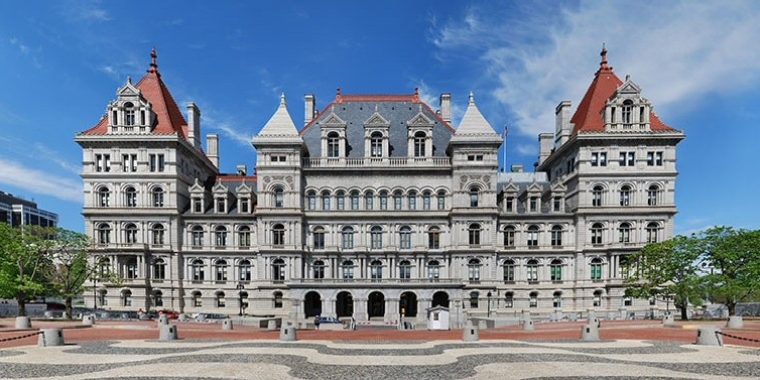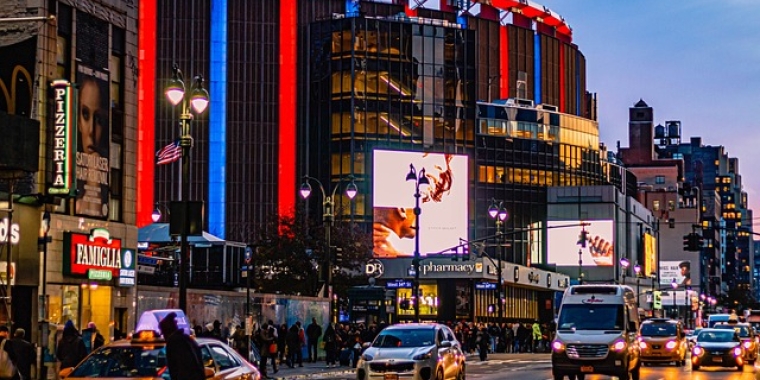
Testimony Before The City Council Committee On Governmental Operations Oversight Regarding The September 13th Primary Election And The Current Status Of Hava Compliance On Friday, September 23rd, 2005
Liz Krueger
July 12, 2010
Good morning. My name is Liz Krueger, and I represent the 26th Senatorial District, which includes Midtown and the East Side of Manhattan. I am here this morning to address New York City’s compliance with the federal Help America Vote Act (HAVA), which requires that every state modernize its voting systems. New Yorkers have a right to the most reliable, secure, and auditable voting system currently available. There are presently two types of voting machines being considered to replace our aging lever machines. The first one is a “Direct Recording Electronic” voting system, also known as a DRE. DRE’s typically resemble PCs with touch-screen capability and they pose a very serious threat to the integrity of the electoral process. The second type of voting machine available is called a Paper Ballot Optical Scanner system, also known as PBOS. Optical scanners use a paper ballot marking system, which is also compatible with a highly sophisticated ballot-marking machine, developed for use by persons with disabilities.
As a State Legislator, I submit that we, the Legislature, failed the residents of New York State regarding HAVA compliance. For over two years the Legislature dithered, while every other state in the union passed legislation addressing HAVA. Only whenNew York State was in danger of being fined for non-compliance did the leadership finally address the matter. Unfortunately, the Legislature decided to forego a uniform statewide standard for voting machinery, in favor of local decision-making by 57county Boards of Election. The package of legislation that we passed will not guarantee a transparent, well-administrated and reliable voting system for New YorkState and now it is up to the localities to show greater wisdom than the Legislature by adopting PBOS technology.
While I am pleased at the Legislature’s decision to require voter-verified paper ballots, it is important to note that several features of the PBOS technology continue to make it more transparent and reliable than DRE’s. The paper ballot is easier for voters to understand and to use. Recounts of paper ballots are far easier than a recount of the rolled up paper trail that DRE systems produce.
I strongly urge that the City of New York reject DRE systems as it selects the HAVA-compliant voting technology that New Yorkers will be using for many years to come. As I see it, the City should use a PBOS system for two reasons: 1) A PBOS system is more accurate, secure and recountable than a DRE system, and 2) A PBOS system will cost the City significantly less money in both the short and the long term.
A recent report by the California Institute of Technology (CalTech) and the Massachusetts Institute of Technology (MIT) found that touch screen DRE systems had the highest rates of spoiled, uncounted and unmarked ballots. Manually counted paper ballots had the lowest average incidence of spoiled, uncounted, and unmarked ballots, followed closely by optically scanned ballots.
A reliable voting technology is a basic requirement for the integrity of the City’s elections. Equally important, that technology must be transparent and inspire voter confidence. The State’s mandate for voter verified paper ballots guarantees that an election can be audited if the Board of Elections determines that an audit is necessary, and decides to undertake one. However, if the City chooses a DRE system, votes will be counted in a relatively opaque electronic process. Computer technologists overwhelmingly agree that it is impossible to ensure that these systems are not flawed or corrupted. If the Board of Elections decides to audit a DRE process, counting all of the voter-verified ballots and reconciling the discrepancies with the electronic tally will be time-consuming and expensive.
In addition to being the most accurate, secure, transparent and accessible voting technology available, PBOS is also the least costly. According to New Yorkers for Verified Voting, in a voting district with three lever machines, the cost for DRE machines will be $36,000. The cost for the PBOS machines with a ballot-marking machine will only be $10,000. Maintenance and storage costs – which will not be paid by federal funds – are significantly lower for the optical scanners than for the DRE machines. Because PBOS systems are simpler and more straightforward, it is both easier and cheaper to train election assistance workers for PBOS systems. No one knows the expected life of a DRE machine, but some predict that they will have to be replaced in five years, to be paid by either the state or local government. Finally, the federal Election Assistance Commission has estimated that their Voluntary Voting System Standards will be available in early 2008; PBOS systems are guaranteed to meet those standards, but DRE systems may not.
I would also like to point to recent stories coming out of Miami-Dade County inFlorida where the County Board of Elections was so dissatisfied with their three-year old, $24.5 million DRE machines that the Commissioner has formally recommended switching to optical scanners. Obviously, Florida knows best when it comes to electoral fraud. So if they don’t trust DRE’s, than we here in New York certainly should not.
Both NYPIRG and Common Cause share my concern that a strong lobby effort from voting machine manufacturers is influencing New York’s voting technology selection process, on a county by county basis. NYPIRG reported that the voting-machine industry, companies that produce both DRE and PBOS machines, spent about $1 million dollars lobbying solely for DRE systems at the State Capitol in 2004. Since DRE’s are far more expensive and require greater maintenance, the lobbyists are being paid to push the DRE’s. Lobbyists and manufacturers are clearly not prioritizing ensuring a New Yorkers right to vote, but rather prioritizing their pocketbooks.
The significance of this decision must not be underestimated. HAVA creates an opportunity for the City to replace our outdated lever machines with modern voting equipment; but neither the federal government, nor the State has taken the necessary steps to ensure that our new equipment is reliable, secure and transparent. The final decision for HAVA compliance now comes down to the local level and I strongly urge that the decision makers choose PBOS systems for New York City.
Thank you for the opportunity to testify today.
Share this Article or Press Release
Newsroom
Go to Newsroom

